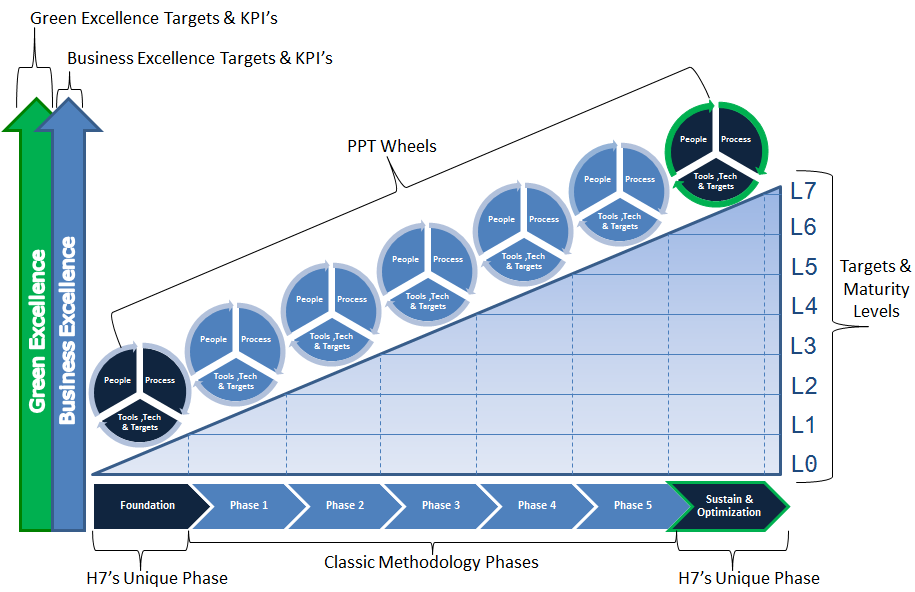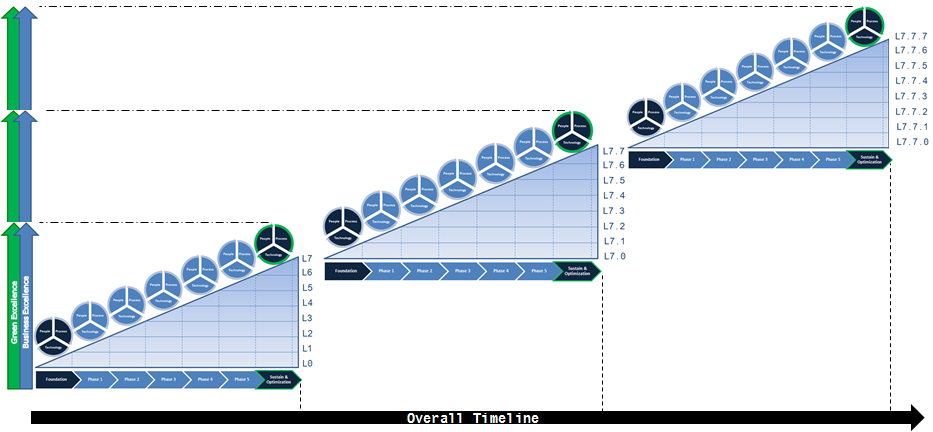The name Holistika is based on the combination of two words: Holistic and Approach.
With Holistika7TM we aim to complement existing methodologies by filling in the gaps as well as highlighting some of the obvious aspects and activities around the project management discipline that are often overlooked during execution.
The intent is to complement your existing methodology by ensuring that:
- all the steps and tasks needed to achieve success are defined
- no critical tasks are omitted along the way
- you deliver an ERP system that you can sustain and optimize over time.
Introduction
• Holistika7 is not another methodology but rather a framework that can be wrapped around the methodology you are already familiar with or about to explore.
• This approach offers a fresh perspective on managing an ERP project with better results and in a sustainable way.
Concept
1 – Your task is to raise a block from the ground up to the peak of a ramp.
2 – By changing the object’s shape, the degree of difficulty in accomplishing your goal is reduced.
3 – If this task had to be managed as a project, you would have to know the total upfront, the effort and timeline required, the milestones, and the status at any given time.

Framework

The Holistika7TM framework can be used with any ERP methodology: waterfall, iterative, or agile.
You can use PMI’s five Process Groups in each phase, or manage them through sprints and backlogs.
The Unique Phases
Foundation:
• Identify critical components, define their key objectives and assess their value.
• Translate them into measurable objectives and outcomes.
• Identify the critical roles of the business.
• Promote a culture of improvement across the organization.
• Integrate Business Processes and Organizational Change Management.
Sustain and Optimization (S&O):
• Focus on the final state and targets, as defined during Foundation.
• Objectives: Smooth transition and sustainable “day after”, optimization of the business processes implemented, the people, technology, tools, and techniques components included.
• Measure progress against clear targets to achieve real results.
Continuous Improvement

The different maturity levels can be defined and tracked as follows:
• First Iteration = Level 7 (Targets defined during Foundation for Go-live)
• Second Iteration = 7.7 (Targets defined in S&O)
• Third Iteration = Level 7.7.7 (Targets defined in S&O)
Roles
• PPT Leads (“Process Leads”) –Business Process Team Leaders who are responsible for managing the PPT Wheels via the PPT Sheets. Examples include the Order-to-Cash Leader, the Procure-to-Pay leader, etc.
• Team Links –Team members assigned to specific areas to promote the required discussions and horizontal interaction across multiple teams. Examples: Business Excellence Link, Green Link , Data Link, etc.
• Project Manager Link (PML) –Project-Office level role who is responsible for all aspects of Holistika7 on the project. Also known as the ‘Holistika7 Champion’.
Artifacts

• PPT Wheels Portfolio (“Portfolio”)
• Dimensional Issues Log (DIL) to track “Rotational” and “Gravitational” Impacts.
• Score Cards for Business Excellence (BES), Green Excellence (GES) and Team Performance (TPS) are also artifacts used to improve visualization around activities and KPIs.
Values
• Holistic Approach.
• Effective Organizational Change Management.
• Business Process Centric.
• Best Practices toward Business Excellence.
• Green Thinking toward Green Excellence.
People and Process centric approach.
• Program and Project Portfolio Management approach.
• Team performance, leadership, and culture of improvement.
• Visual mechanisms and tools to track progress against well-defined targets.
• Integration is the key!
Click on the links below* or use the navigation bar for more details on Holistika7TM:
Introduction > Concept > Framework > The Unique Phases > Continuous Improvement > Roles > Artifacts > Values
(*) Note: requires FREE basic membership.

